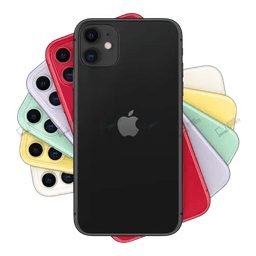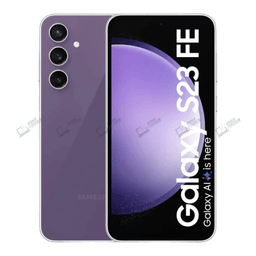
Floating Touch™ Technology: How It’s Changing Smartphones Interaction
The touchscreens on smartphones haven't changed fundamentally in more than a decade. The underlying interaction remains the same, even though we've swiped and pinched through billions of screens. Now, Floating Touch (tm) Technology is changing the game with its AI-powered phone sensor and gesture-based mobile interface.
What is Floating Touch (tm) and how does it change smartphone interaction? It's a simple contactless navigation system, which uses floating sensors on phones, such as proximity detectors and AI-driven motion trackers, to interpret gestures just above the display. It unlocks no-touch nav, reduces fingerprints by up to 80% and improves hygiene.
This guide will help you understand how Floating Touch (tm) is influencing the future of smartphone UX. It also explains how gesture-based UI designs are affecting app developers, as well as creating new opportunities for smartphone brands and app developers.
The Evolution of Smartphone Interaction
From Buttons to Touchscreens
In the early days of mobile phones, there were physical buttons and keypads. After capacitive screens, mobile interaction evolved. Touch became the standard input method after the iPhone was launched in 2007.
Rise of Gesture Control
As time went on, many brands began to experiment with motion-based navigation. Examples include Samsung's Air Gestures and LG's hand wave features. The motion-based navigation features were not only exciting, but also inconsistent and gimmicky. These attempts, however, laid the foundations for the gesture control UX which smartphones refine today.
Floating Touch™ as the Next Step
Floating Touch(tm) Technology redefines the smartphone experience. It doesn't simply mimic touch, but it also detects your finger before you even land. Think hover touch detection that detects your finger even before it touches the screen, or zero-touch navigation to scroll through social feeds without direct contact.
What is Floating Touch Technology?
Definition & Core Concept
Floating Touch (tm) is the next-generation smartphone UX powered by hovering sensors and AI gesture tracking. You can control your device by swiping or pressing the screen.
How It Works
-
Proximity sensing display: Detects when your finger is near.
-
Optical sensing technology: Reads movements above the glass.
-
Machine learning gesture control: Learn your habits for predictive smartphone UX.
-
Haptic feedback alternatives: May use subtle vibrations or sounds to confirm input.
Why Does It Matter in 2025?
Touchless phones are more important than ever in a post-pandemic world. Floating Touch(tm) has the potential to be just as revolutionary as the switch from keypads to touchscreens. It is also compatible with AI in smartphones, and AR/VR integration.
Real-World Applications of Floating Touch
Gaming & Immersive Apps
Imagine playing a racing game simply by tilting your hand and waving it above the screen. Mobile gaming will become more intuitive and immersive with gesture-based controls.
Healthcare & Accessibility
Surgeons can review patient charts in the middle of an operation without touching a contaminated gadget. Motion-based navigation offers a new way to interact with apps for users who have limited mobility.
Everyday Smartphone Tasks
Floating Touch(tm), from touchless swipe motions for reading the news to contactless screens for video calls, fits seamlessly into everyday life. Even simple tasks like scrolling through social media feel futuristic.
Benefits & Challenges of Floating Touch
Key Benefits
-
Hygiene & safety: Reduces screen contact and smudges.
-
Accessibility: Helps people with disabilities navigate phones.
-
Longevity: Less wear and tear on smartphone displays.
-
Futuristic UX: Enhances smart UX interaction trends for premium phones.
Challenges to Overcome
-
Accuracy issues: Small misreads can frustrate users.
-
Battery consumption: Sensors may drain power.
-
Developer adoption: Apps must be optimized for gesture-based UI design.
-
Cost factor: High-end advanced smartphone displays aren’t cheap.
Future of Floating Touch in Smartphones
AI & Gesture Prediction
Future phones will be able to recognize context-aware gestures, such as if you are trying to zoom in, scroll down, or skip a section. AI gesture tracking is now central to the predictive UX of smartphones.
Integration with AR/VR
Hover touch recognition will be integrated seamlessly into the rise of AR glasses, VR platforms and other technologies. Imagine a screenless navigation system where your phone is used as an interactive sensor in 3D space.
The Path to Mass Adoption
In 2025-2030 futuristic smartphone features such as Floating Touch(tm) could become commonplace. Touchless interaction is less science fiction than ever before. With the foldable phone trend still shaping designs, and the rise of AI power pushing for natural interaction phones.
Conclusion
Floating Touch(tm) Technology is more than a gimmick-it's a shift in how we think about human-device interaction. As smartphones evolve with AI-driven sensors, gesture-based interaction trends, and next-gen phone display technology, users will expect natural, touchless navigation as a standard feature.
If you're exploring future smartphone technologies, designing for AI in mobile UX, or curious about gesture-based interaction trends, this is the perfect time to dive deeper.
Ready to explore how Floating Touch(tm) and next-gen phone display technology can reshape your business, app, or UX strategy? Reach out today for insights tailored to your digital future.
FAQs
Q. What is Floating Touch™ and how does it work?
A. It’s a gesture-based control system that uses sensors and AI to detect hovering gestures above the screen, enabling zero-touch display navigation.
Q. Is Floating Touch™ better than regular touchscreens?
A. Not a replacement, yet. It’s a complementary input method that adds convenience, hygiene, and accessibility.
Q. Which brands are testing or adopting this technology?
A. While early experiments came from Sony and Samsung, several trending smartphones of 2025 are rumored to integrate contactless display navigation.
Q. Will apps need updates to support touchless gestures?
A. Yes. Developers will need to adopt gesture-based UI design for full functionality.
Q. How does it affect battery and performance?
A. Extra sensors can impact power, but AI in smartphones will optimize energy consumption.









